From action-packed eyewitness accounts such as Guadalcanal Diary to devastating Holocaust memoirs like The Diary of Anne Frank and Night to the thrilling espionage tale of Operation Mincemeat, World War II is the subject of some of the most fascinating and influential nonfiction books ever written.
Each year, seemingly dozens of new titles emerge to offer fresh perspectives and uncover fascinating details about the deadliest conflict in human history. These 30 classics cover the war from the Eastern Front to the South Pacific, and investigate its murky origins and complex legacies. Make your next great read one of these essential World War II books.
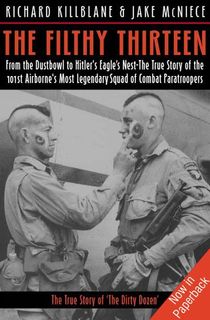
The Filthy Thirteen
This is the true story of the unit that inspired the classic film The Dirty Dozen. Within the 101st Airborne Division—the paratroopers who led the Allied invasions into Nazi-occupied territories—there was one legendary unit that became known as the Filthy Thirteen. Discover the tough group of men who came together to inflict their wrath on the Axis Powers.
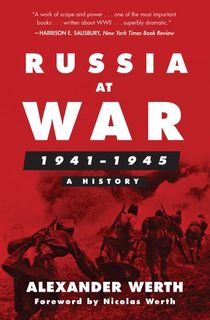
Russia at War, 1941–1945
Impressive in scope, this comprehensive history book details Russia’s role in World War II. Russian-born British journalist Alexander Werth captures every aspect of the war, from efforts on the home front to high-level diplomacy and military strategy to the hardships faced by soldiers on the front lines. He manages to put a human face to the brutal conflict, covering a range of topics without losing sight of what the war was like for everyday people.
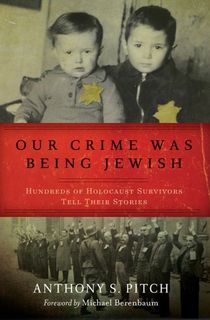
Our Crime Was Being Jewish
Six million Jews were killed in the Holocaust, a number that’s difficult to wrap one’s head around. This book can help readers get closer to understanding the lived experiences of survivors. Called “one of the most important books of our time” by the National Archives, this book digs into the harrowing stories of 358 survivors and what they saw, from the ghettos to concentration camps. The result is an important testament to history that must not be forgotten.
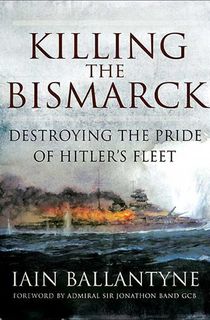
Killing the Bismarck
The Bismarck was one of the largest battleships ever built by Germany, intended to dominate the waters around Europe—yet the Royal Navy was determined to take her down. Focusing mostly on British perspectives, this account shares the pulse-pounding story of the ships that pursued the Bismarck into the frigid Denmark Strait, and the bitter fight to sink her once and for all.
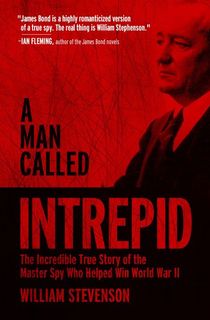
A Man Called Intrepid
Ian Fleming once said, “James Bond is a highly romanticized version of a true spy. The real thing is William Stephenson.” Stephenson is the focus of this fascinating account of WWII espionage. A British agent sent to the US by Winston Churchill with the goal of developing an international intelligence agency, he helped establish the precursor to the CIA. This book shares his career and the many clandestine missions he participated in that helped defeat Nazi Germany, some of which have only recently become known to the general public.
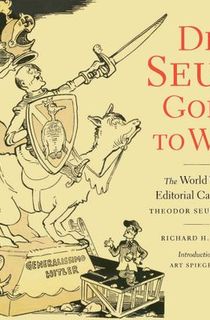
Dr. Seuss Goes to War
Every American is familiar with the prolific children’s book author Dr. Seuss. But what many people don’t know is that he also penned political cartoons during World War II for the New York daily newspaper PM, which frequently criticized fascism in Europe. This fascinating book collects many of his political cartoons along with “insightful” commentary by historian Richard H. Minear, who explains the context and what was happening in the world at the time (Booklist).

Japan Runs Wild, 1942–1943
In early 1942, things were looking grim for the Allies. The Imperial Japanese Army and Navy were conquering vast swaths of territory in the Pacific and thwarting all of the Allies’ advances. But by the end of 1943, circumstances had changed drastically, and Japan was on the defense. Historian Peter Harmsen chronicles this transformation and what led to it, shedding light on the role of America specifically, as well as many other nations involved in the conflict.
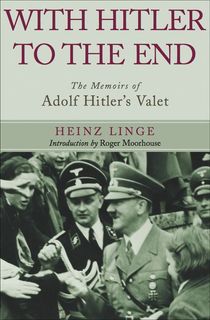
With Hitler to the End
SS officer Heinz Linge worked closely with Hitler for 10 years. He was responsible for all aspects of his household, and guarded the door to the Berlin bunker when Hitler committed suicide. In his “creepy yet fascinating” memoir, Linge recalls firsthand what it was like to work alongside the Führer day in and day out, and what his private life was like (Library Journal). It’s an intimate portrait of the ruthless leader that few other books can rival.
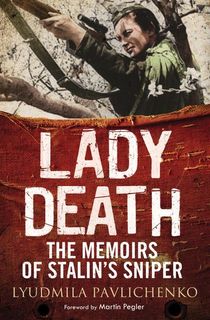
Lady Death
When World War II broke out, Lyudmila Pavlichenko dropped out of university to serve the war effort—not as a nurse, but as a sniper for Russia’s Red Army. She would become the most successful female sniper in recorded history, and is still honored in Russia today. After the war, she finished her education at Kiev University and became a historian and advocate for women’s rights. Her memoir shares the remarkable story of her unique life path.
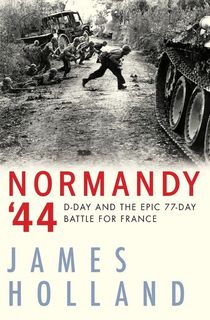
Normandy '44
In his powerful new account of the Normandy invasion, renowned author, historian, and Royal Historical Society fellow James Holland delivers a fresh look at one of the defining battles of WWII. Drawing on a wealth of archived material and first-hand accounts, Holland moves beyond the established D-Day narrative to illuminate the human drama of Operation Overlord, chronicling in fascinating detail the concentrated planning that went into the campaign and the operational brilliance that led to a victory for the Allied forces. The result is an engrossing and thoroughly researched new narrative, and a must-read addition to World War II history literature.

1942
Revisit America's entrance into the war with this sprawling account of the pivotal year that decided the ultimate direction of World War II. From the Pulitzer Prize-winning author of Forrest Gump comes an exploration of the strategies, battles, and fateful decision-making that defined the turning point of the war. A must read for any WWII history buff.
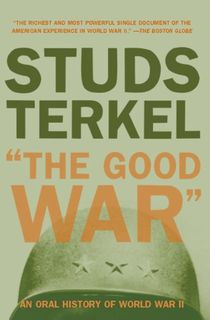
"The Good War"
American icon Studs Terkel relives the personal tolls of World War II through interviews with soldiers, sailors and civilians alike. Providing unfiltered accounts from those directly affected by the war, both at home and on the front lines, Terkel allows the reader to experience what it truly meant to live through every facet of World War II. Published 40 years after the war, Terkel's retrospective won a Pulitzer Prize.
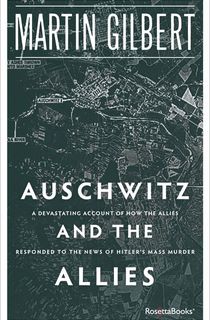
Auschwitz and the Allies
Distinguished British historian Martin Gilbert was the official biographer of Winston Churchill and wrote a number of essential books on 20th century history and the Holocaust—including Never Again: A History of the Holocaust and The Holocaust: The Human Tragedy. In this absorbing and devastating work, Gilbert examines the actions taken (and not taken) by the Allies upon learning of Hitler’s campaign of systematized mass murder.

The Miracle of Dunkirk
The inspiration behind Christopher Nolan’s blockbuster WWII film Dunkirk, Walter Lord’s definitive account of Operation Dynamo is an essential read for WWII history buffs. With vivid prose bolstered by survivor interviews and eye-witness reports, Lord recounts the miraculous 1940 evacuation of some 338,000 Allied soldiers from the beaches of Dunkirk as Nazi forces closed in.

Hiroshima
Originally published in the August 31, 1946 issue of The New Yorker, this compassionate and richly observed portrait of six survivors of the atomic bombing of Hiroshima caused an immediate sensation. It was the first–and only–time the magazine had devoted an entire issue to a single article. Newsstands sold out within hours, and radio stations interrupted their regular programming to broadcast readings of the complete text.
More than a year after the Japanese city was destroyed, Americans were getting the first full account of the horrors of nuclear warfare. Hersey described stone facades permanently etched with the silhouettes of vaporized people and soldiers whose eyes were melted by the atomic flash. Widely recognized as one of the earliest examples of New Journalism (the style of reporting made most famous by Joan Didion), Hiroshima profoundly impacted the debate over nuclear weapons and played a key role in the healing process between America and Japan.

With the Old Breed: At Peleliu and Okinawa
With brutal honesty and lucid prose, Eugene Bondurant Sledge provides a grunt’s-eye view of infantry combat in the Pacific Theater of World War II. Nicknamed “Sledgehammer” by his comrades, Sledge fought with the 1st Marine Division in the grueling battles of Peleliu and Okinawa. Using notes he secretly kept in a pocket-sized New Testament, Sledge describes the terror of life on the front lines and documents acts of savagery committed by both sides. But he also admires the courage of his fellow soldiers and pauses, when he can, to observe his natural surroundings–an interest that would lead to a later career as a biology professor. With the Old Breed was one of the main sources for Ken Burns’s documentary The War and helped to form the basis for the HBO mini-series The Pacific.

A Spy at the Heart of the Third Reich
In this riveting narrative, Lucas Delattre examines the true story of Fritz Kolbe, a German bureaucrat and anti-Nazi who risked his life betraying Hitler’s regime to become one of America’s most valuable German spies. Described by Allied officers as the “prize intelligence source of the war” yet despised by many post-war Germans as a traitor, A Spy at the Heart of the Third Reich delivers an extraordinary chronicle of conscience and subterfuge that plays out like a John le Carré spy thriller.
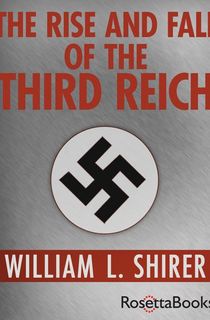
The Rise and Fall of the Third Reich
First published in 1960, this National Book Award winner and New York Times bestseller traces the rise and fall of Nazi Germany from Adolf Hitler’s birth in 1889 to the end of World War II in 1945. As a foreign correspondent for the Chicago Tribune and one of “Murrow’s Boys” at the CBS Radio Network, Shirer reported from Berlin and Vienna in the years before the war and followed the German Army during the invasion of France.
After the war, he drew on his own experiences and a wealth of newly available documents, including the diaries of propaganda minister Joseph Goebbels and General Franz Halder and testimony from the Nuremberg trials, to write this 1,250-page volume. The book was a huge commercial success, selling one million hardcover copies and going through twenty printings in its first year. Although its scholarly reputation is often debated, The Rise and Fall of the Third Reich remains one of the most influential tomes about World War II to this day.
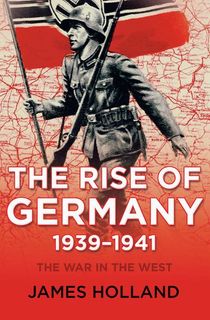
The Rise of Germany, 1939–1941
In this “impeccably researched and superbly written” work (Guardian), Holland examines Germany’s rise to power and the early years of World War II. Beginning with the outbreak of war in 1939 and ending on the eve of Operation Barbarossa, the Axis invasion of the Soviet Union in 1941, the author weaves together long-lost memoirs and freshly-released official records with his own research to produce an intimate, multi-layered history of the early years of WWII. The Rise of Germany is the first in Holland’s planned trilogy; the second entry in the trilogy, The Allies Fight Back 1941-43 was published in 2015.
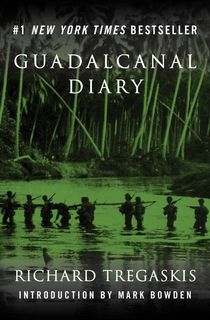
Guadalcanal Diary
On August 7, 1942, Allied forces, primarily US Marines, landed on the islands of Tulagi and Guadalcanal in the southwestern Pacific to fight back the encroaching Japanese army. The combined air, land, and sea assault was the first of its kind, marking the Allies’ first major offensive against the Empire of Japan in the Pacific theater. Volunteer combat correspondent Richard Tregaskis was one of just two journalists who witnessed the invasion. In this landmark work of war journalism, Tregaskis chronicles the harrowing experiences of the young marines who made the operation a success.

Enemy at the Gates
William Craig’s New York Times bestseller served as the inspiration for the 2001 film of the same name, starring Jude Law, Rachel Weiss, and Joseph Feinnes. The culmination of five years’ worth of research, Craig’s sweeping historical narrative brings to life the brutal siege of Stalingrad, a grueling battle between German and Soviet forces that lasted from August 1942 to February 1943, resulted in nearly 2 million casualties, and turned the tide of war against Hitler’s regime.

Maus
This Pulitzer Prize-winning graphic novel recasts the Holocaust with Nazis as cats, Jews as mice, and Poles as pigs. Originally serialized in the alternative comics magazine Raw, the story moves back and forth between present-day Rego Park, New York and Nazi-occupied Poland. In New York, cartoonist Art Spiegelman tries to mend his fractured relationship with his father, Vladek, by drawing a book-length comic based on Vladek’s wartime experiences. In Poland, Vladek and his wife, Anja, endure forced relocation to the Sosnowiec Ghetto; the death of their first son, Richieu; and imprisonment in the Auschwitz concentration camp.
Hailed by The Wall Street Journal as “the most affecting and successful narrative ever done about the Holocaust,” Maus elevated the critical reputation of comics and inspired countless artists, including Chris Ware, Alison Bechdel, and Marjane Satrapi.
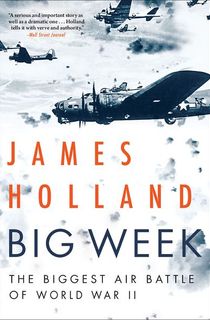
Big Week
In February 1944, Allied air forces launched a massive aerial assault aimed at decimating the Nazi war machine and destabilizing the Luftwaffe in anticipation of the Allies’ upcoming cross-channel invasion of German-occupied Western Europe. Officially, the campaign was known as Operation Argument. Yet it soon became known as the “Big Week”—and it had a seismic impact on the course of the war. In this expertly written account, Holland traces the biggest air battle of World War II, chronicling the clash from both sides of the conflict and revealing the vital role it played as the Allies prepared for the Battle of Normandy.
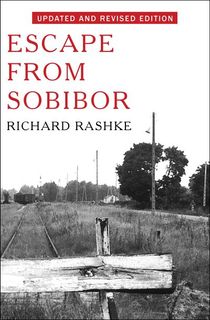
Escape from Sobibor
In this “moving and angry book [that] deserves to be read” (The Washington Post), lecturer and author Richard Rashke delivers a stirring account of the Sobibor uprising. On October 14, 1943, six hundred Jewish prisoners at a secret Nazi concentration camp in eastern Poland revolted against their captors. They killed some twelve SS officers, overpowered camp guards, broke through perimeter fencing, and fled across an open mine field toward the surrounding woods. Incredibly, approximately 300 resistance fighters made it into the forest—fifty of whom survived the war. Based on interviews with eighteen of those survivors, Escape from Sobibor is a tribute to courage and determination in the face of abject cruelty.
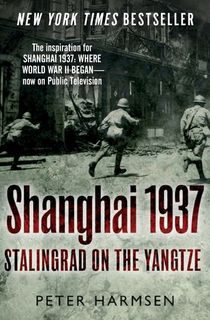
Shanghai 1937
Peter Harmsen examines the bloody 1937 confrontation between China and imperial Japan at the Battle of Shanghai in this New York Times bestseller—which inspired the PBS documentary, Shanghai 1937: Where World War II Began. Described by western historians as “Stalingrad on the Yangtze”, the fierce urban engagement raged through the streets of Shanghai for three months. One of the bloodiest battles of the Sino-Japanese War, the Battle of Shanghai set the stage for the global conflict to come. Harmsen followed Shanghai 1937 with Nanjing 1937—a grim account of Imperial Japan’s horrendous assault of the city of Nanjing.

The Longest Day
Based on interviews with more than 1,100 D-Day survivors, The Longest Day is the definitive account of the Allied invasion of Normandy on June 6, 1944. Ryan experienced the battle firsthand as a 24-year-old reporter for the Daily Telegraph. When the bomber he was flying in was hit and had to return to England, he jumped into a patrol boat and returned to cover the fighting on the French beaches. Fifteen years later, Ryan set out to tell “what actually happened, rather than what generals or others thought happened.” The result is a masterpiece of military history packed with novelistic details, from the U.S. paratrooper who won $2,500 at cards on the eve of the battle but deliberately lost it all so as not to run out of luck to Field Marshal Rommel’s reason for being 600 miles away when the invasion began–he was bringing his wife her birthday present.

In the Garden of Beasts
This #1 New York Times bestseller is the riveting story of William E. Dodd, the American ambassador to Germany from 1933 to 1937. Dodd, a history professor, was not Franklin D. Roosevelt’s first choice for the job, and he arrived in Berlin with little appetite for the endless socializing expected of a diplomat and little sense of the dangers posed by Germany’s newly-appointed chancellor, Adolf Hitler.
While Dodd struggled to find his place, his 24-year-old daughter, Martha, took to her glamorous new life with verve. Beautiful and sexually adventurous, her high-profile paramours included Rudolph Diels, the chief of the Gestapo, and Boris Winogradov, an attache to the Soviet Embassy who recruited her as a spy. Part political thriller, part family drama, In the Garden of Beasts brings fresh perspective to the question of why it took the world so long to recognize the threat of the Third Reich.
.jpg?w=640)
An Army at Dawn
While most American history buffs are well versed in the Allied push across Europe after the Normandy landings and the key battles for control of the Pacific, the North African campaign is a less familiar subject. Drawing on personal diaries and letters from soldiers as well as official documents kept in British, American, French, Italian, and German war archives, Rick Atkinson corrects the record in this Pulitzer Prize-winning history, the first volume in The Liberation Trilogy. From the amphibious invasion of Morocco and Algeria in November 1942 to the Allies’ watershed victory at the Second Battle of El Alamein and the US Army’s coming-of-age at the Battle of Hill 609 in Tunisia, An Army at Dawn seamlessly integrates big-picture military strategy with boots-on-the-ground perspective. Atkinson is particularly insightful on the clash of egos between the old-school British commanders and their upstart American counterparts.

Stalingrad: The Fateful Siege: 1942-1943
The five-month siege of Stalingrad was one of World War II's bloodies battles and a turning point in the fight for Europe. Antony Beevor, a former British Army officer, brilliantly balances the huge scale of the conflict with a soldier’s-eye view of some of the most horrific conditions in the history of modern warfare.
He begins with Operation Barbarossa, the 1941 German invasion of the Soviet Union that was plagued by bad weather, long supply lines, and difficult terrain, and analyzes how the Luftwaffe’s carpet bombing of Stalingrad helped to create the treacherous, rubble-strewn conditions that allowed Soviet snipers to wage a gruesome war of attrition. Most captivatingly, Atkinson portrays Stalingrad as the terrifying outcome of totalitarianism: Hitler lived in a fantasy world and refused to listen to German officers who tried to save the Sixth Army from complete destruction, while Stalin’s demands for total obeisance resulted in the executions of 13,500 Red Army soldiers.

Human Smoke
In this highly unusual and captivating work, novelist Nicholson Baker tells the story of the buildup to World War II in vignettes. Each short piece contains a fact or a quotation drawn from primary sources including newspaper articles, radio speeches, personal diaries, and government transcripts.
Through the steady accumulation of detail, Baker suggests that Allied leaders were not as reluctant to enter the global conflict as most historians contend. He goes back to as far as 1920 to quote Winston Churchill on the proposed bombing of civilian targets in Iraq (“I am strongly in favor of using poisoned gas against uncivilized tribes”), then skips ahead to the prime minister’s preferred military strategy in 1941: “One of our great aims is the delivery on German towns of the largest possible quantity of bombs per night.” Turning to the American scene, Baker draws from sources suggesting that Franklin D. Roosevelt may have deliberately goaded the Japanese into bombing Pearl Harbor so the US could enter the war.
Some scholars were harsh in their judgment of Human Smoke, but by returning to the primary material, Baker rescues pacifism as an honorable concept and reminds readers that when military leaders rush to apply new technologies to warfare, it is often civilians who suffer the most.
.jpg?w=3840)





.jpg?w=640)
